Joan Miró i Ferrà (Barcelona, 1893 - Palma de Mallorca, 1983) was one of the most important authors of the entire twentieth century and devoted his career to continuous artistic experimentation. His story has often been juxtaposed with theSurrealist avant-garde, of which he was a member from 1924 to 1929. However, Miró detached himself from the movement after a few years because of the rigid schematism imposed by the association’s most important theorist, André Robert Breton (Tinchebray, 1896 - Paris, 1966). The imposition of a style was in sharp contrast to Joan’s continuous experimentation in both technical and stylistic areas.
Joan Miró’s artistic imagery was nurtured by influences of various kinds, beginning with the earliest, for example, primitive cave paintings, African works, and Catalan Catholic works. Among his models also appear the paintings of the great Nordic masters of the 15th century, such as Hieronymus Bosch (’s-Hertogenbosch, 1453 - 1516) and the more modern works of expressionist Edvard Munch (Løten, 1863 - Oslo, 1944). Yet her two greatest sources of inspiration were the works and theories of her fellow Surrealists and those of the great master Pablo Picasso (Malaga, 1881 - Mougins, 1973). Joan used these models to create her style, characterized by a strong spiritualism and a relentless search for a universally understandable language.

Joan Miró i Ferrà was born in Barcelona from the marriage of goldsmith Miquel Miró Adzerias and Dolores Ferrà i Oromí. After a brief paranthesis as an office clerk, Miró enrolled in the private academy of Francisco Galí (Barcelona, 1880 - 1965) in Barcelona. The latter was an innovative teacher who helped Miró develop the basic principles of his painting, such as intuitive perception of forms and an extraordinary sensitivity.
Later, Joan enrolled in the Free Academy of Drawing of the Cercle Artísticde Sant Lluc in Barcelona. In the Catalan city, Miró got to know other young artists and the works of some of the greatest European masters. One of the most important occasions was the exhibition organized in Barcelona in 1916 by the French art dealer Ambroise Vollard (Saint-Denis, 1866 - Versailles, 1939), where some of the masterpieces of Vincent van Gogh (Zundert, 1853 - Auvers-sur-Oise, 1890) and the Fauves expressionist avant-garde were exhibited. During the exhibition, The Young Joan was impressed by the heightened expressiveness of the works. Also during these years, Miró came into contact with the Dada artistic avant-garde, whose willingness to break with tradition and initiate a constantly changing artistic quest he admired.
In 1919 Joan Miró moved to Paris for the first time, where he discovered an environment somewhere between innovation and tradition. Indeed, in the French capital the young Catalan spent his days arguing with Pablo Picasso and studying ancient masterpieces in the Louvre.
The most important encounter of the Parisian stay was with the Surrealist avant-garde and its exponents. The relationship between Surrealism and Miró was very particular, because the Catalan artist never fully adhered to the movement, but always remained alongside it and partly autonomous. Among the cornerstones of the movement Joan appropriated that ofpsychic automatism, that is, the transcription into painting of one’s own thoughts, without the filter of reason. In 1925 Joan Miró participated in his first Surrealist exhibition at the Pierra Gallery, which met with considerable success.
However, following a series of ideological clashes, in 1929 Miró decided to leave the Surrealist movement, although he never completely detached himself from it at least ideologically.
On October 12, 1929, Joan Miró married Pilar Juncosa in Palma de Mallorca, and the two settled in Paris, where the artist began an important phase of technical experimentation. In fact, during these years Joan gave birth to numerous collages and constructions, with which he initiated the "murder of painting,“ as a sign of rebellion against traditional painting techniques. By the ”murder of painting," Miró meant the desire to move beyond the traditional technique of oil painting to research new methods in response to contemporary needs.
The early 1930s were very fortunate for the Catalan artist, as he gave birth to his daughter María Dolores and exhibited in various galleries around the world, gaining international recognition.
This flourishing period of Miró’s painting was quelled by the historical and political situation of the late 1930s. During this period, Joan presaged the feeling that something terrible was about to happen, and her fears were realized in 1929, when the dictatorship of Francisco Franco (Ferrol, 1892 - Madrid, 1975) was established. The strong upheaval also influenced his art, which became clothed in a crude realism with acid tones, described by critics as "tragic," from which sprang disturbing and somber works.
The war took him further and further away from reality, pushing him toward an escape from everyday life. This sense of estrangement and his continuing experimentalism flowed into the Constellations series, which painter and historian Roland Algernon Penrose (London, 1900 - Chiddingly, 1984) called “one of the most brilliant episodes of his career.” During the making of these compositions Miró returned to Spain in 1941, to Montroig, where he was able to refine his style, marked by the creation of a universal and common language.
Beginning in 1944 Joan Miró began to approach a new artistic technique, ceramics, with which he made his first in sculptures in 1946. The Catalan had already executed constructions, but with this new material he was able to create monumental sculptures, characterized by a formal simplicity typical of primitivist works.
Between 1947 and 1948 Miró went to the United States for the first time, where he met the famous painter Paul Jackson Pollock (Cody, 1912 - Long Island, 1956), inventor of dripping, and the art dealer Aimé Maeght (Hazebrouck, 1906 - 1981, Saint-Laurent-du-Var), who began to handle the sale of Miró’s works in Europe.
Between 1956 and 1958 Joan created the two ceramic murals for UNESCO headquarters in Paris, one representing the sun, the other the moon. For the two walls Miró drew inspiration from Antoni Gaudí i Cornet ’s (Reus, 1852 - Barcelona, 1926) Park Güell in Barcelona and the cave paintings of the Altamira Cave. To create the murals, after an initial unsuccessful project with majolica tiles, the Catalan artist chose to lay irregular tiles to create a background, on which to paint the images with a broom of palm leaves. The operation was very complicated, but the end result was acclaimed by both the general public and institutions, to the point that Miró received the Guggenheim International Award.
In the latter part of his life Joan Miró continued to engage in experimentation, moving from one artistic technique to another. For example, beginning in 1966 he devoted himself to making bronze sculptures, for which he obtained the materials to cast from discarded objects, so that he could combine one of the oldest and noblest artistic techniques with the humility of useless objects.
In addition to bronze sculptures, the artist confronted unusual materials and began to burn or tear canvases before painting them, demonstrating great tenacity even at the age of seventy-three.
In 1968 Joan received an honorary degree from Harvard University, Cambridge, and numerous exhibitions were organized to honor him. Finally, in 1975 the Fundació Joan Miró was opened in Barcelona, where more than ten thousand pieces were collected. The Catalan artist died in 1983 in Palma de Mallorca.
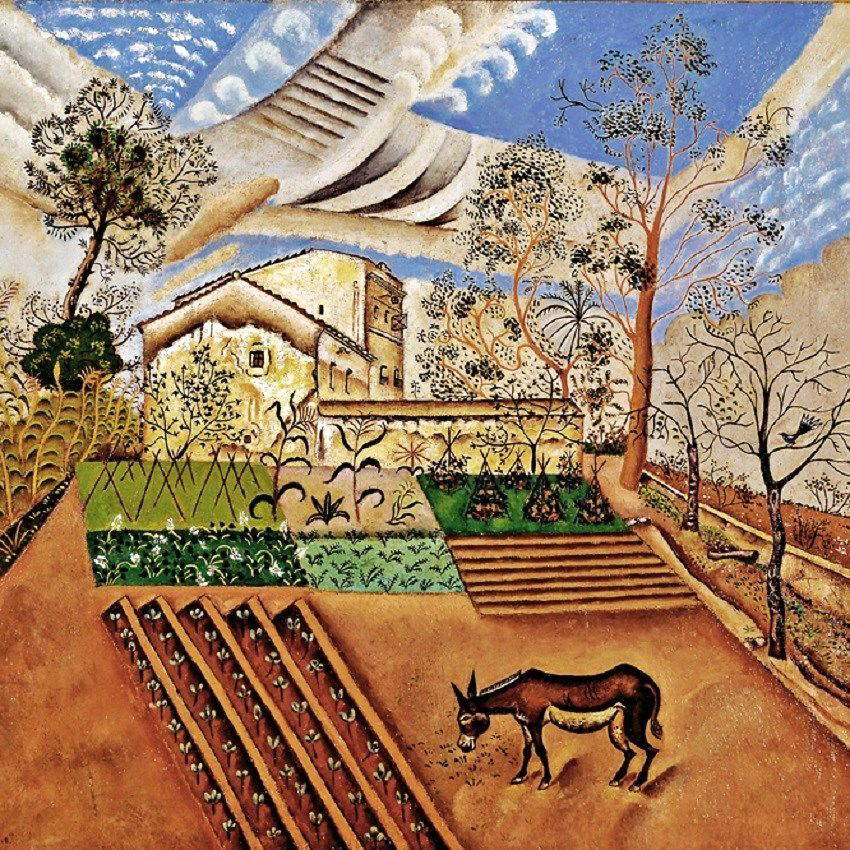
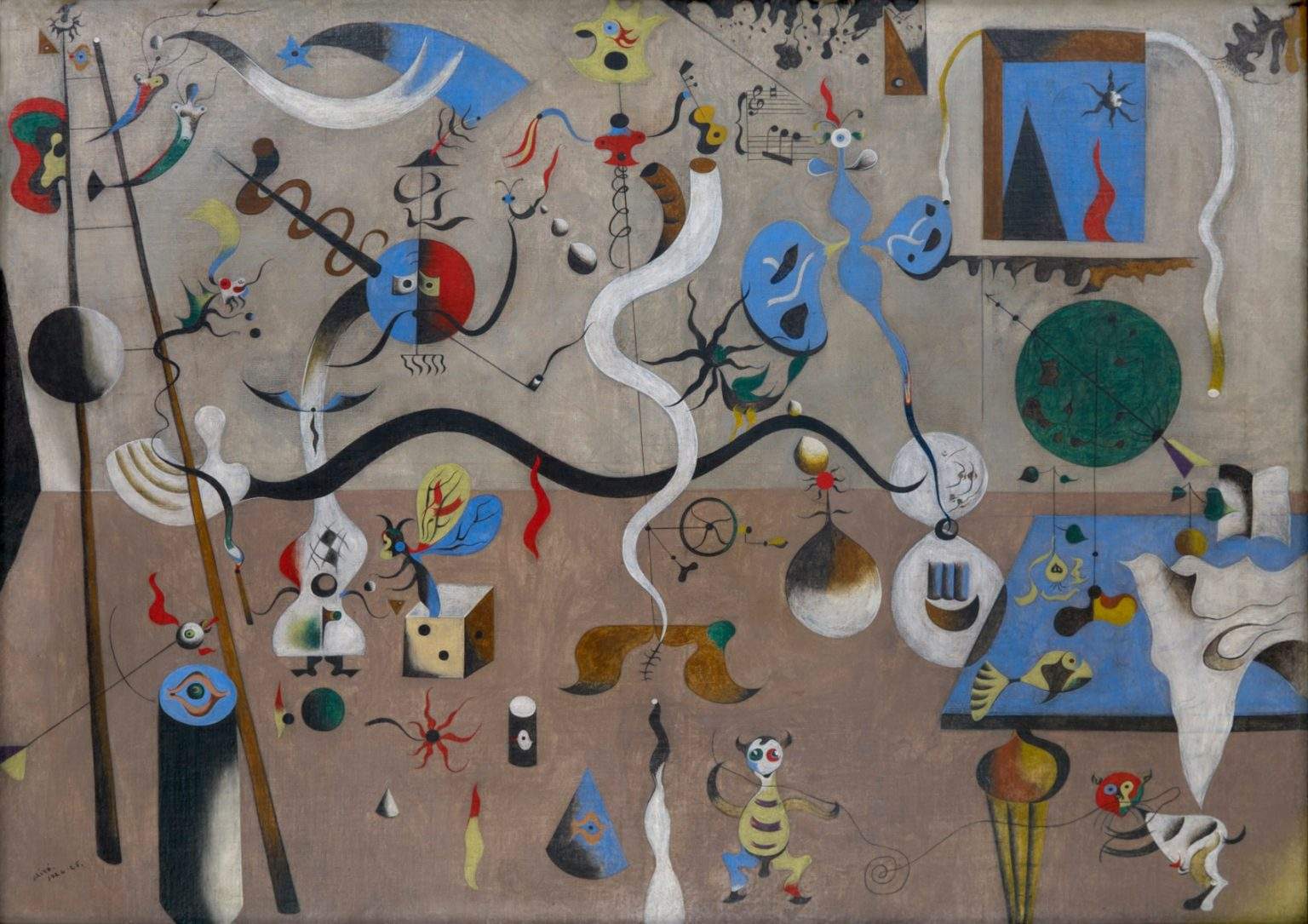
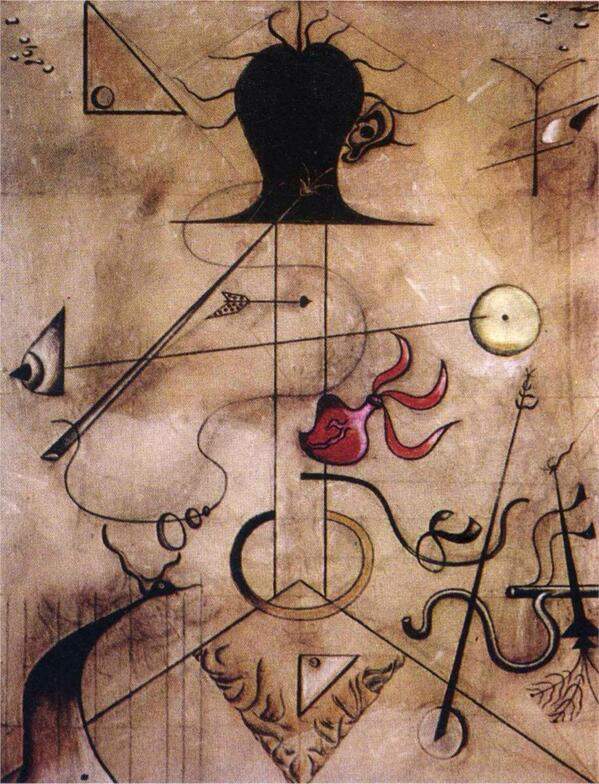
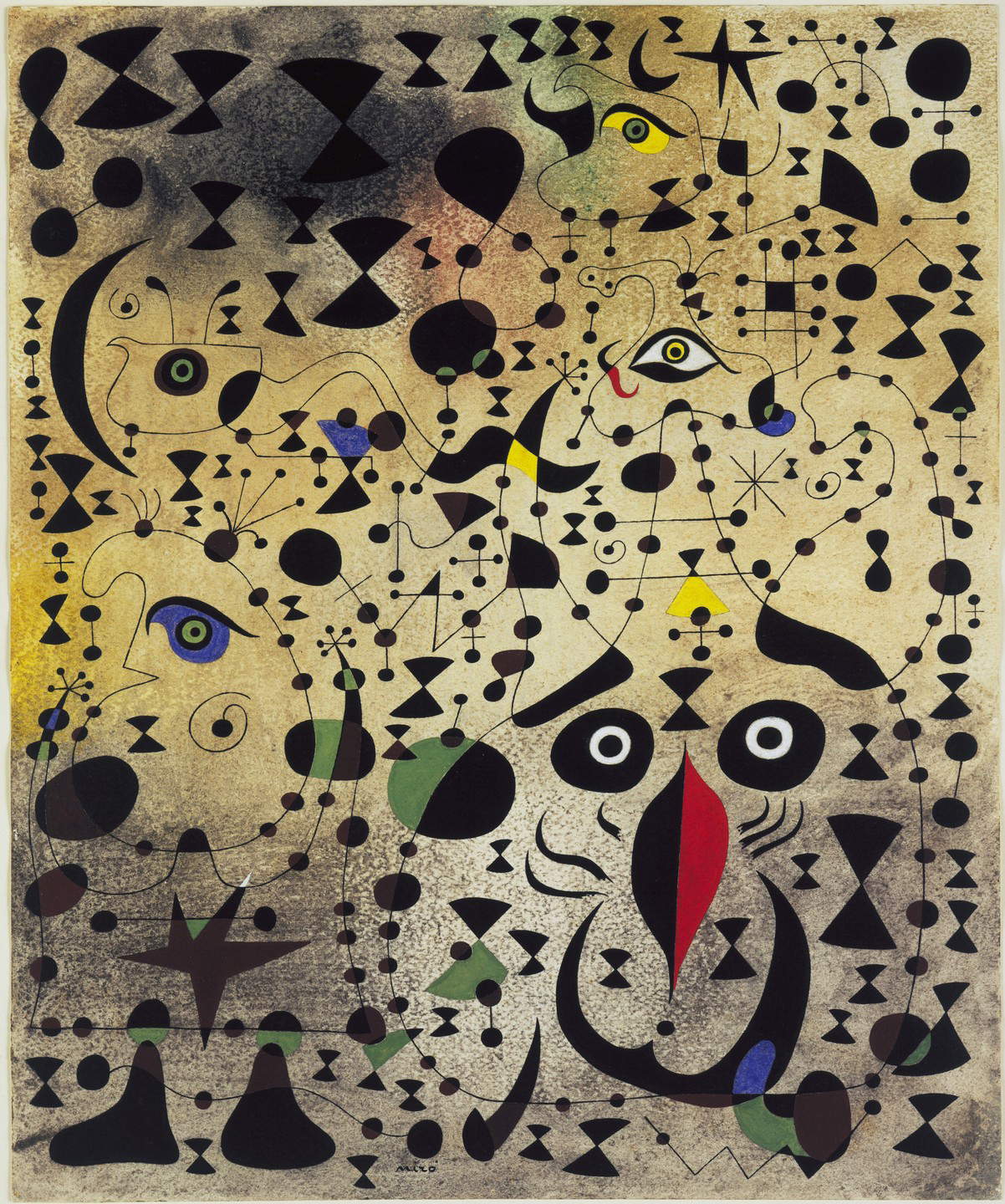
Joan Miró’s training was characterized by the study of the artworks of his homeland, those of the primitives, and also the great masterpieces of contemporary artists.
During a first phase between 1917 and 1923, Joan devoted himself to the creation of works with a descriptive and naive character. Present in these canvases is the strong relationship between the artist and the history of his homeland, Catalonia, which had been claiming independence from Spain for centuries. Catalan landscapes and its inhabitants become the protagonists of his works, and the popular dimension merges with the poetic and political. The style is calligraphic, at times even descriptive, as in the case of the work The Garden and the Donkey (1918). In this painting Miró depicts a typical landscape of the Catalan countryside, in which the warm and familiar colors of his homeland are blended with Cubist imagery. In fact, the sky is broken down into various bands of color and the geometric arrangement of the fields creates a composite and unnatural mosaic. Moreover, Miró seems to foreshadow the fairy-tale, dreamlike world that would later be unleashed with his adherence to the Surrealist avant-garde.
Around 1924 Joan Miró approached the Surrealist avant-garde, which forever conditioned his style. From this moment on, his works became colored with polychrome and imaginative images, in which Catalan subjects were replaced by lively carnivalesque creatures. The artistic manifesto of this phase can be seen in the painting The Carnival of Harlequin (1924). The canvas was made during a phase of extreme poverty in Miró’s life, which forced him to go hungry. According to the painter’s accounts, hunger and isolation in his studio caused him numerous hallucinations, which the painter tried to immortalize in his works, as in the case of The Carnival of Harlequin. The work depicts an interior in which numerous polymorphous creatures are depicted, with the accompaniment of some musical notes. Among the various elements also appears the staircase, one of the most recurring subjects in Miró’s imagination, symbolizing continuous artistic experimentation. The protagonist of the work is Harlequin, a comic character wallpapered in different colors, who loves to play pranks. It is actually ametaphorical self-portrait of the author, who depicts himself as a playful host ready to leave the party he himself organized, because he was bored with an invention that was now devoid of new creative insights.
In the phase following his partial adherence to the Surrealist movement, Miró studied new forms of representation in order to move beyond established models. The painting of this phase emptied itself of the figurative element, leaving ample room for monochromatic backgrounds and stylized figures, sometimes accompanied by lettering. One of the greatest masterpieces of this period was the Portrait of Madame K. (1924), in which the figurative figure seems to decompose and stylize.
The period following the decomposition of pictorial subjects was one of experimentation with polymateric works, composed of unusual materials. These were compositions made with objects capable of echoing a given subject through a series of sensory or metaphorical allusions. For example, figures or silhouettes recalling dancers never appear in the Spanish D ancers series. However, the essence of the dancers is suggested by elements in the compositions, such as the small image of a slipper made from a newspaper or a very light feather.
After an initial phase of upheaval, due to the events of war that shook all of Europe, Joan Miró was able to regain a state of calm, which led him to the execution of the Constellations series. These are twenty-three tempera paintings on paper, made between 1940 and 1941, in which the artist dialogues with the celestial bodies that had fascinated him since childhood. Amid the various representations of constellations appear some of the typical subjects of Miró’s imagination, such as arabesques, women, musical notes, birds and scales. Noteworthy among the twenty-three works is one of the last tempera paintings executed by Joan: The Wonderful Bird Reveals the Unknown to a Loving Couple. In this masterpiece, the artist connects the various figures by means of a very thin line, which accentuates the intrinsic connection between each image, including the seemingly less important ones.
At the end of his career, Miró became fascinated by Japanese culture, which he came to know through exhibitions held in Tokyo and Kyoto. In particular, what impressed Joan was the discovery of the extreme closeness between his poetics andhaiku (short Japanese poems with very deep meaning). A parallel between these poems and her art can be seen in the painting The Gold of Blue (1967), in which a large blue spot is balanced by smaller black ones against a bright golden background. In this work, the discovery of Japanese culture blends with some of the typical symbols of Miró’s art, such as constellations and his passion for music.
Joan Miró was one of the most important European artists of the twentieth century and devoted his life to experimenting with new techniques and searching for a universal language, immediately understandable by all.
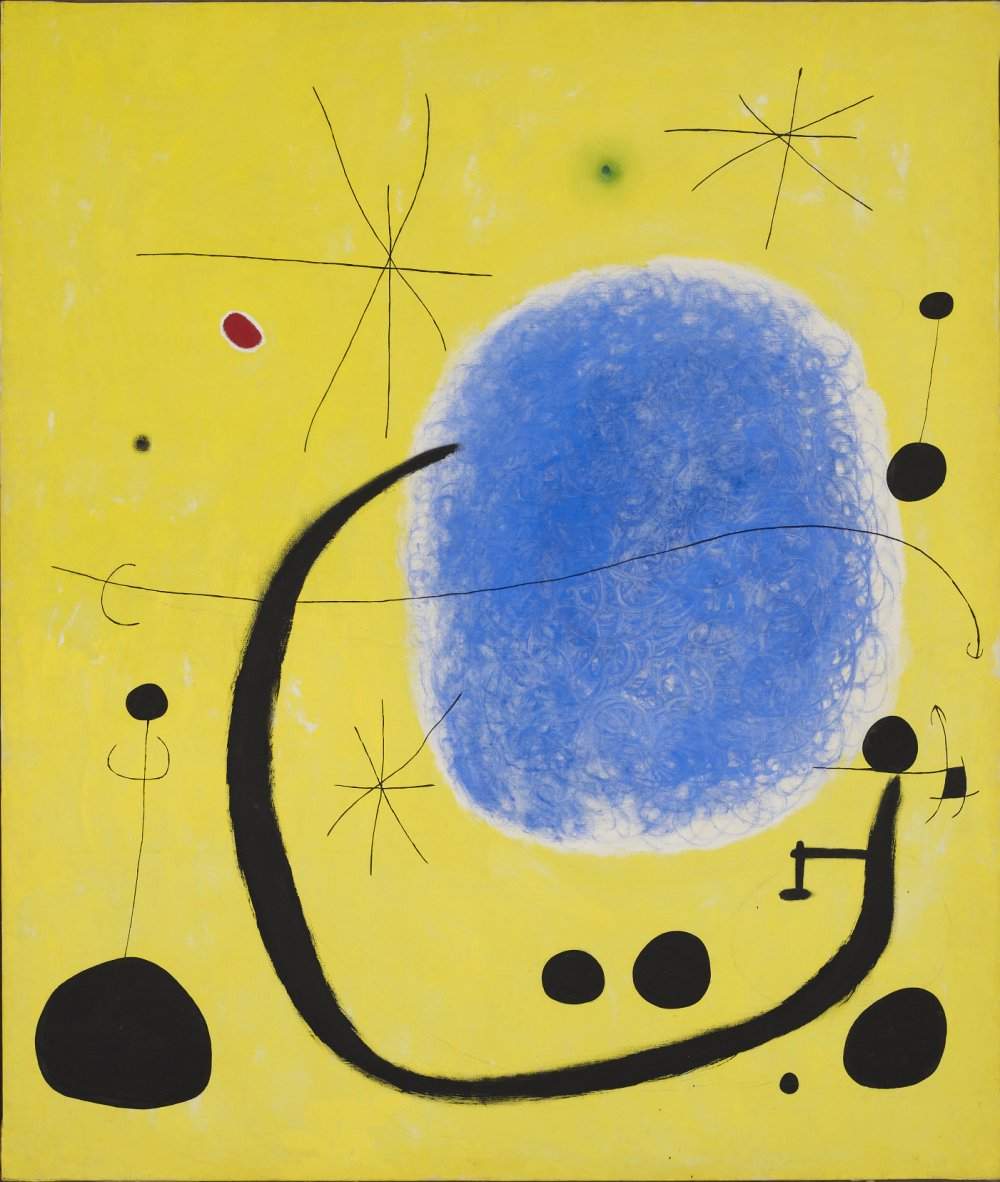
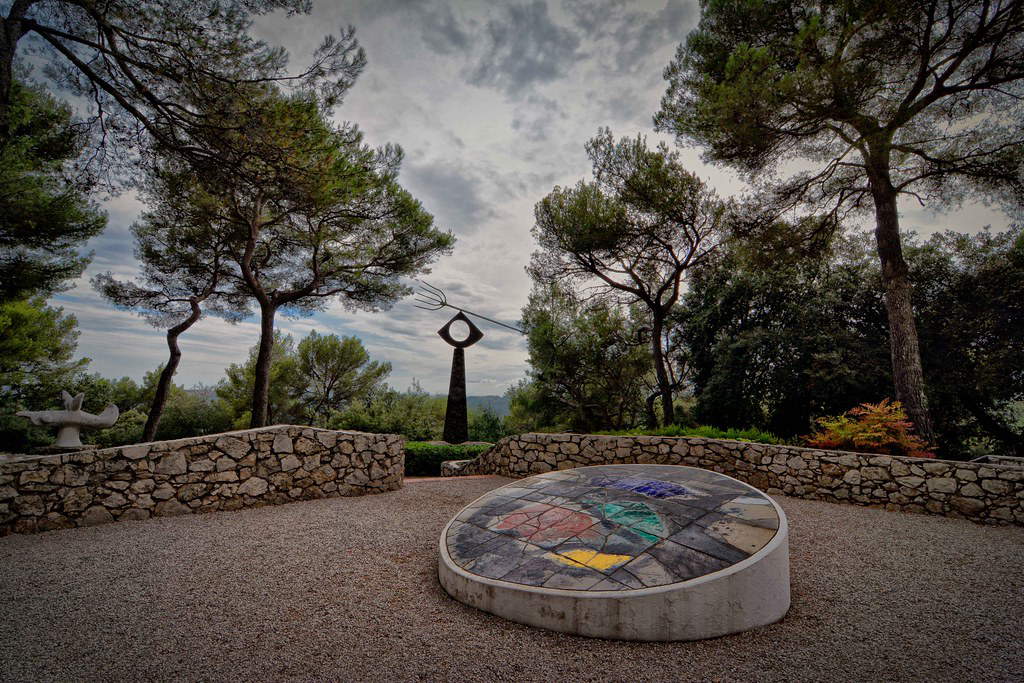
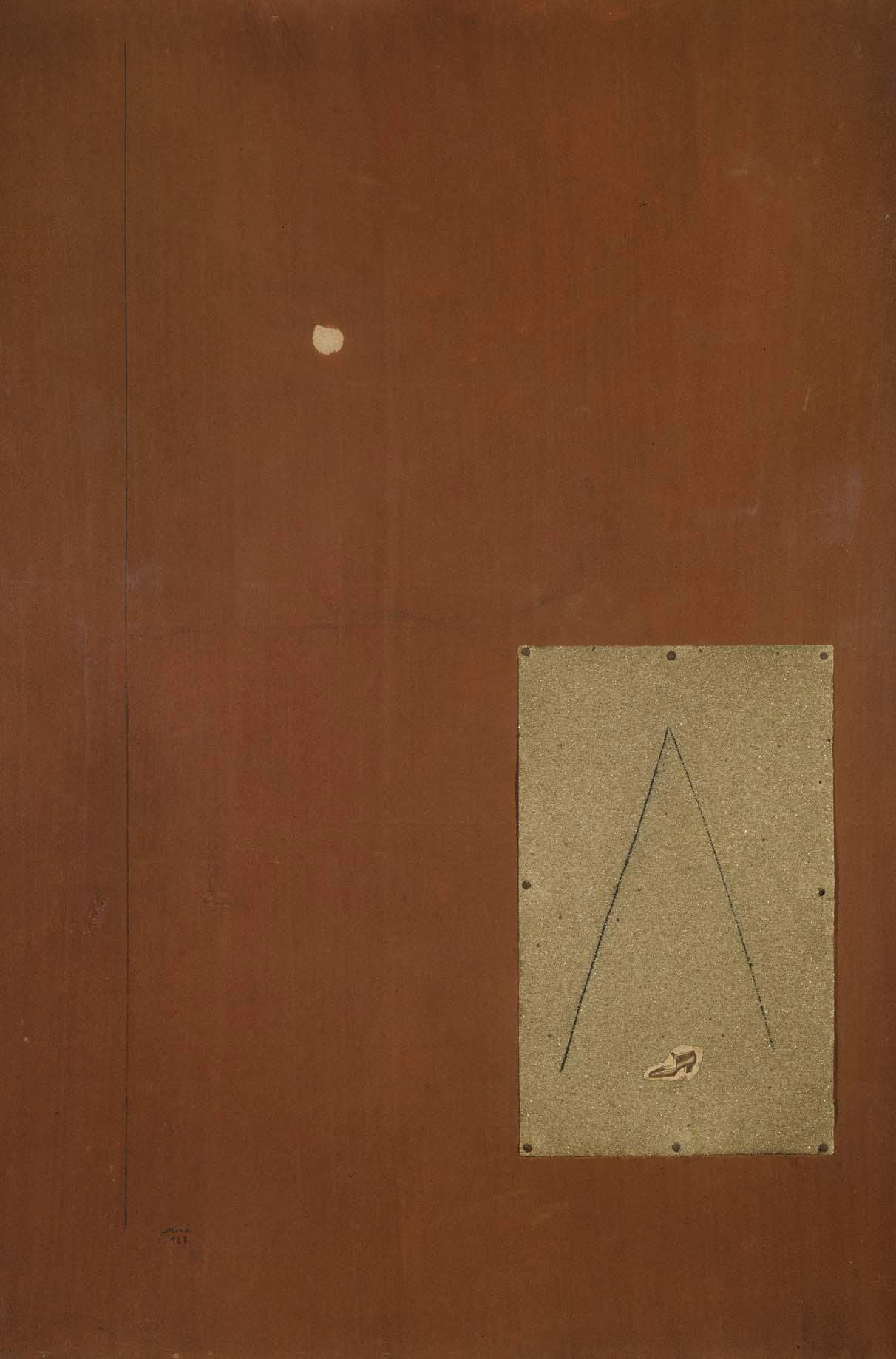

Given the Catalan master’s great fame, Joan Miró’s masterpieces are preserved in several European states and beyond. In 1975 the Fundació Joan Miró was inaugurated in Barcelona, inside which some 10,000 works are collected, including sculptures, paintings, drawings, tempera paintings and tapestries. Also in Europe, one of the cities where numerous works by the Catalan artist are present is Paris, where the works are divided mainly between the Musée du Louvre and the Musée national d’Art moderne, Centre Georges Pompidou. In addition to the masterpieces housed within the two museums, the city is also home to the two murals Miró created for the UNESCO headquarters. Also in France is the Labyrinth (1961-1981), executed for the garden of the Maeght Foundation in Saint-Paul-de-Vence by Josep Lluis Sert, to which Miró contributed several statues.
Finally, several of Joan Miró’s works are preserved in numerous museums in the United States. For example, in New York it is possible to admire the Catalan artist’s masterpieces at both the Solomon R. Guggenheim Museum and the Museum of Modern art. While in Buffalo, at the Albright-Knox Art Gallery, Harlequin’s Carnival is preserved.
 |
| Joan Miró: life, works and style of the Catalan surrealist artist |
Warning: the translation into English of the original Italian article was created using automatic tools. We undertake to review all articles, but we do not guarantee the total absence of inaccuracies in the translation due to the program. You can find the original by clicking on the ITA button. If you find any mistake,please contact us.